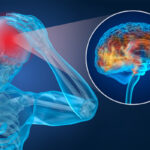“When you are dealing with depression and anxiety, you feel like you’re lost,” said former Michigan State star offensive lineman and Miami Dolphin, Arthur Ray. A patient of Chicago Mind Solutions, Ray discussed in his video testimonial that he believed concussions sustained during his playing career contributed to these mental health conditions. As an elite athlete, he admitted that he put off seeking help because it wasn’t the macho thing to do. When he finally decided to come in for neurofeedback treatment, he revealed, “It was a game-changer that helped me retake control of my life.”
Often, people discover neurofeedback treatment and its life-changing benefits late in their treatment journey, largely because they didn’t know it existed in the first place.
Understanding Neurofeedback
The term neurofeedback sounds very sciency, especially since it involves monitoring alpha, beta, delta, and theta brainwaves and conducting Quantitative Electroencephalogram (QEEG) assessments. More on that in a minute. Yes, there’s definitely a lot of science to it, but in short, neurofeedback trains the brain to better deal with anxiety, depression, traumatic brain injury, problems with learning, concentration and more.
“How come I don’t know about it?” You may ask. Though neurofeedback was first used by NASA decades ago to help astronauts recover from seizures caused by jet fuels, it has only gained popularity in the last decade.
How it Works
The aforementioned brainwaves are electrical impulses that influence behavior, emotions, and thoughts. As we’ve previously written, neurofeedback treatment begins with a QEEG brain map to establish a baseline of activity that records how the brain is currently functioning, according to brainwave activity. Using a computerized program, neurofeedback enhances the brain’s ability to move from one form of wave activity to another. Regions of dysfunction are detected so that symptoms can be treated directly.
Below, we discuss four reasons why you should consider neurofeedback as a first resort of treatment.
- Neurofeedback Trains the Brain to Self-Regulate
Our brains hold a rather unfair advantage: they control us. What if we could level the playing field a bit and control our brains?
Choosing neurofeedback treatment allows the brain to self-regulate because it helps calm the central nervous system, which controls most functions of the body and mind. A calm central nervous system makes the brain more amenable to learning and problem-solving.
- You Can See Your Brainwaves at Work
A unique characteristic of neurofeedback is that you have a front-row seat of your brain activity show. The non-invasive treatment starts with the application of sensors to the patient’s scalp, which transmit brainwaves onto a computer screen. The patient participates in activities that allows them to see in real time how brainwaves appear when they are stressed, relaxed, focused, or unable to concentrate.
The value of this visual cannot be overstated, as we’ve noted before:
“Over the course of treatment, the patient learns how to activate positive brain activity and inhibit less desirable activity. Eventually, when these skills are generalized, the patient is able to regulate these states effortlessly and automatically themselves, on a permanent basis.”
- Neurofeedback Treats a Multitude of Conditions
Behavioral health diagnoses often travel well together: Many people with Major Depressive Disorder also suffer from Generalized Anxiety Disorder; the executive functioning challenges caused by ADHD can severely impact mood; and so on.
The comprehensiveness of neurofeedback and its ability to hone in on brainwaves allows patients to improve cognition, mood, motor function, anxiety, pain, and more. One of our treatment options is Low Energy Neurofeedback System (LENS), a type of brain stimulation therapy that allows us to target different areas of the brain to encourage it to rewire itself and utilize more optimal brainwave activity. Think of your brain as a computer that’s rebooted so that it runs more smoothly and efficiently.
- If Left Untreated, the Brain Suffers
Chronic mental health conditions cause dysfunctions in the brain. Though you may feel relief between bouts of depressive episodes, for instance, there are long-term effects. Ongoing or untreated depression can create brain inflammation, causing thinking problems, damaging brain cells, preventing new brain cells from growing, and accelerating brain-aging.
Long-term anxiety and panic episodes attack your central nervous system and trigger your brain to release stress hormones routinely, increasing the incidence of headaches, dizziness, and depression.
The longer you wait to seek neurofeedback treatment, provided you’re the right candidate, the more your brain suffers.
There are many other Chicago Mind Solutions success stories like Arthur Ray’s. A common theme is that some patients tried other treatments first and were unsuccessful or didn’t seek treatment at all before coming to us. Neurofeedback treatment works, and we encourage you to make an appointment to determine if it’s the right option for you.
Contact us at info@chicagomindsolutions.com or call (847) 656-5080. We look forward to working with you!






